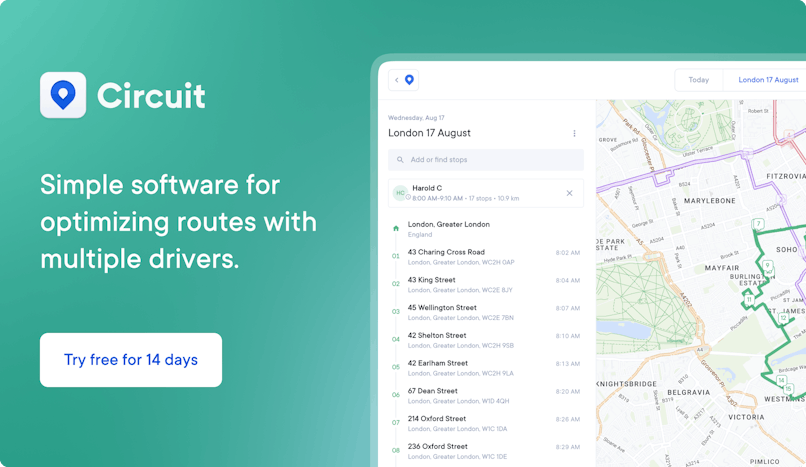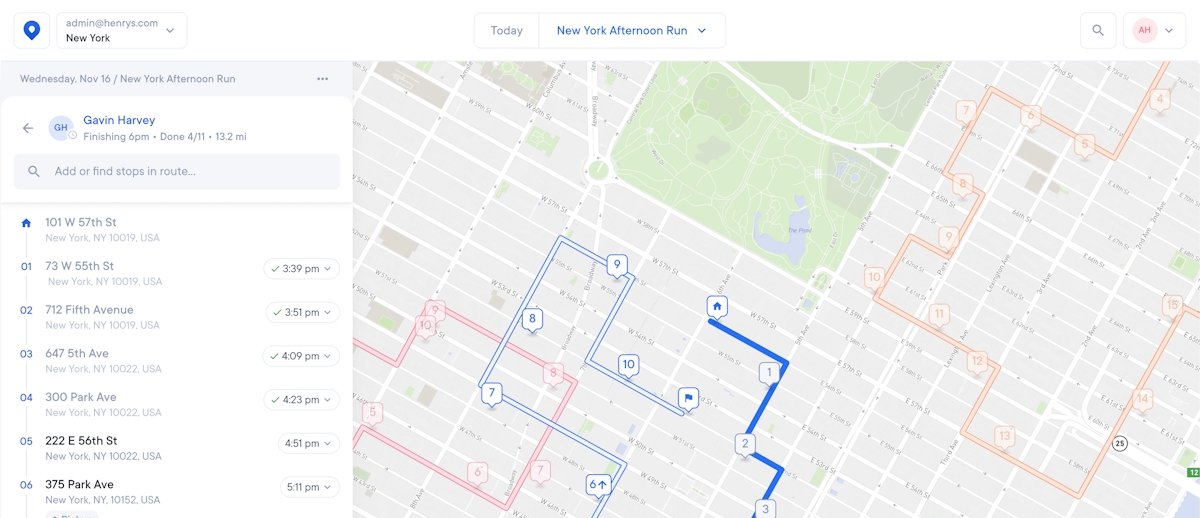How to Choose the Best Proof of Delivery App for Your Delivery Team
Using a proof of delivery app can increase your profitability by reducing your overall liability. But how do you choose the right POD solution for your team?

For small to midsize delivery teams — including delivery companies, couriers, and merchants offering local delivery — using a proof of delivery app can offer tangible business benefits. In fact, collecting proof of delivery (POD) can actually increase your profitability by reducing your overall liability.
For example, if your delivery driver makes a delivery without getting POD, and a customer calls to say they never got their package, it puts you in an awkward position where you may end up doing a redelivery to avoid the bad reputation caused by unsatisfied customers.
When this happens, you’re not only losing money on the goods themselves but also suffer the expense of sending a driver back out on another delivery route.
Proof of delivery solves this problem, but you need the right tool to capture it. In this post, we’ll explore:
- What functionality you need from your proof of delivery solution
- The advantages and disadvantages of standalone (single-purpose) proof of delivery apps
- How Circuit offers proof of delivery as part of a delivery management platform
What functionality do you need from a Proof of Delivery solution?
A proof of delivery app will need to help your delivery team achieve two key tasks:
1. Capture a signature for delivery
A proof of delivery app will turn the driver’s smartphone or tablet into a terminal for the customer to sign their name electronically. This signature is then uploaded into the app’s back-end, providing a digital proof-of-delivery, where it can be referenced by dispatch.
This helps eliminate any “he said, she said” of lost deliveries.
2. Capture a photo of where they left the parcel
If a customer isn’t home, delivery companies might try to redeliver the item at a later time. This can drain resources, because your driver is doing twice the work for one stop.
It also can lead to customer dissatisfaction — a customer who wanted the product but couldn’t receive it now has to wait longer to get it delivered.
But if the driver just leaves the package on the patio or near the front door, there isn’t clear documentation about where (or when) that package was left.
Proof of delivery apps solve this problem by letting the driver take a photo of where they left the package, and then upload it into the app, as well as send a copy to the customer for their reference.
The driver can also leave notes that accompany the photo, such as “left package under bush.”
And to make delivery operations more efficient, a POD app might also give ETA updates to customers, meaning they’re more likely to be home when the package arrives.
The biggest challenge for delivery companies is to integrate proof of delivery into their overall delivery process.
POD is a fairly common feature within large enterprise-level delivery management software, but that kind of platform isn’t viable for small to midsize delivery operations.
The good news is that there are two alternatives, which we’ll discuss in this post:
3. Using standalone proof of delivery apps
These are apps that only offer the POD features we discussed above. They can usually hook up to an in-house management system, often using an API integration functionality to connect the POD electronic signature to other tools. These apps tend to not be very useful by themselves — you need to plug them into other tools.
4. Using Circuit
Our route management tool is designed to help delivery teams plan and execute their daily routes.
Circuit started as a route optimization tool, but it has grown to become a route management platform that lets dispatchers plan the fastest routes, track deliveries in real-time, update recipients, and collect photo and electronic signatures for proof of delivery.

How standalone Proof of Delivery apps work
Mobile proof of delivery apps — or standalone single-purpose POD apps — vary greatly in sophistication. But usually, you’ll take your orders and input the list with CSV or Excel — or through an API integration with your order management system, CRM, or eCommerce platform (e.g. Shopify or WooCommerce).
These orders are then loaded into an app, and your driver can access the proof of delivery functionality through their device. At the same time, the driver is using a separate route management or navigational tool to actually make their deliveries. This can be as simple as using Google maps to plan a multi-stop route or could be something like a more sophisticated enterprise-level courier management system.
The disadvantages of standalone Proof of Delivery apps
If you’re looking to offer paperless (electronic) delivery — i.e. you don’t want your drivers carrying around a clipboard, pen, and manifest for signatures — you’ll need some form of proof of delivery solution. The question is whether a standalone POD app is the right choice, or whether a tool like Circuit suits you.
We see three disadvantages of using a standalone proof of delivery app at a small to midsize company:
1. Too many platforms
The complication with using an electronic Proof of Delivery app that exclusively handles POD is that now you’re dealing with multiple platforms to complete each delivery.
For example, if you’re using route planning tools to create optimal routes in the morning, plus your team is using Google Maps or other GPS delivery apps to execute the routes, then your team is now juggling multiple platforms to complete one delivery.
This is expensive and inefficient. The more tools you have to complete a single delivery, the more fragmented the process, which makes it difficult and costly to scale your business.
2. Expensive pricing tiers
Some POD apps pricing tiers are established by how many deliveries you make.
So the more deliveries, the higher the cost of the app. But this pricing tier may also be true for your courier management system. So now you’re being charged more just for growing your business.
3. No communication between tools
If a customer calls dispatch because they can’t find their package, you’ll have to toggle between platforms.
If you’re using a standalone POD app, your customer’s electronic signature or your driver’s photo of the package isn’t necessarily uploaded into your route planning tool.
This means if a customer calls dispatch inquiring about their delivery, your back-office team needs to open up another tool, search for that customer, and then see what the driver recorded.
But if you’re using an all-in-one route management solution like Circuit, the proof of delivery is recorded alongside the stops in a single dashboard.
If you’re a large courier and you’re using an enterprise-level fleet management system, and you need customized or branded delivery notifications and parameters such as barcode scanning, it makes sense to research integrated proof of delivery apps. Especially if your current solution doesn’t include that functionality. But for small to midsize delivery companies, you’ll need something else. Enter Circuit.
How Circuit gives effective proof of delivery within a sophisticated delivery management platform
Circuit offers the two main types of proof of delivery — photo capture and electronic signature capture.

When a driver arrives at their destination, they can collect an electronic signature on their smartphone, or they can leave the package in a safe place, snap a photo on their smartphone, and send the picture — along with any delivery notes — to dispatch at HQ and/or the customer.
This way, both the delivery company and the customer are in the loop on where the package is.
And importantly, using Circuit gives you the same benefits of a standalone proof of delivery software within a broader route management and optimization platform. So there’s no need for multiple tools.
Alongside proof of delivery, when you’re using Circuit, you’re also getting:
- Route optimization: Route optimization lets you create optimal routes with multiple stops. We’ve spoken to several businesses — such as Applied Data Tech — who were spending up to 1.5 hours each morning optimizing their routes. With Circuit’s route optimization features, that time is reduced down to just 10-15 minutes.
- Route monitoring: Route monitoring tells dispatch where their drivers are in real-time within the context of the route. For example, it doesn’t just tell you that your driver is at 29th and Harding, but that your driver has completed this specific stop and is on their way to this next destination. We’ve had delivery teams use route monitoring to help them prepare for the next shipment of orders — by knowing how close the drivers are to returning to HQ, a volunteer team in England was able to strategically plan when to pack up their next food parcel orders.
- Real-time delivery updates for the customer: You can send the recipient an SMS message or email with a link to a dashboard that shows their route in progress. The customer can check this link throughout the day to get real-time updates on when their package will be delivered.
Circuit for Teams vs proof of delivery apps: Final takeaways
Proof of delivery doesn’t exist in a vacuum — it helps to integrate POD with delivery planning and route optimization, real-time driver tracking, and customer notifications. Capturing proof-of-delivery is just one part of the puzzle, and Circuit gives you the benefits of a proof of delivery app while offering a lot more in one single platform to help dispatchers at small to midsize delivery teams.
If you manage a team of drivers and want a simple, cost-effective way to capture proof of delivery while making your delivery routes far more efficient, start your free trial today.




